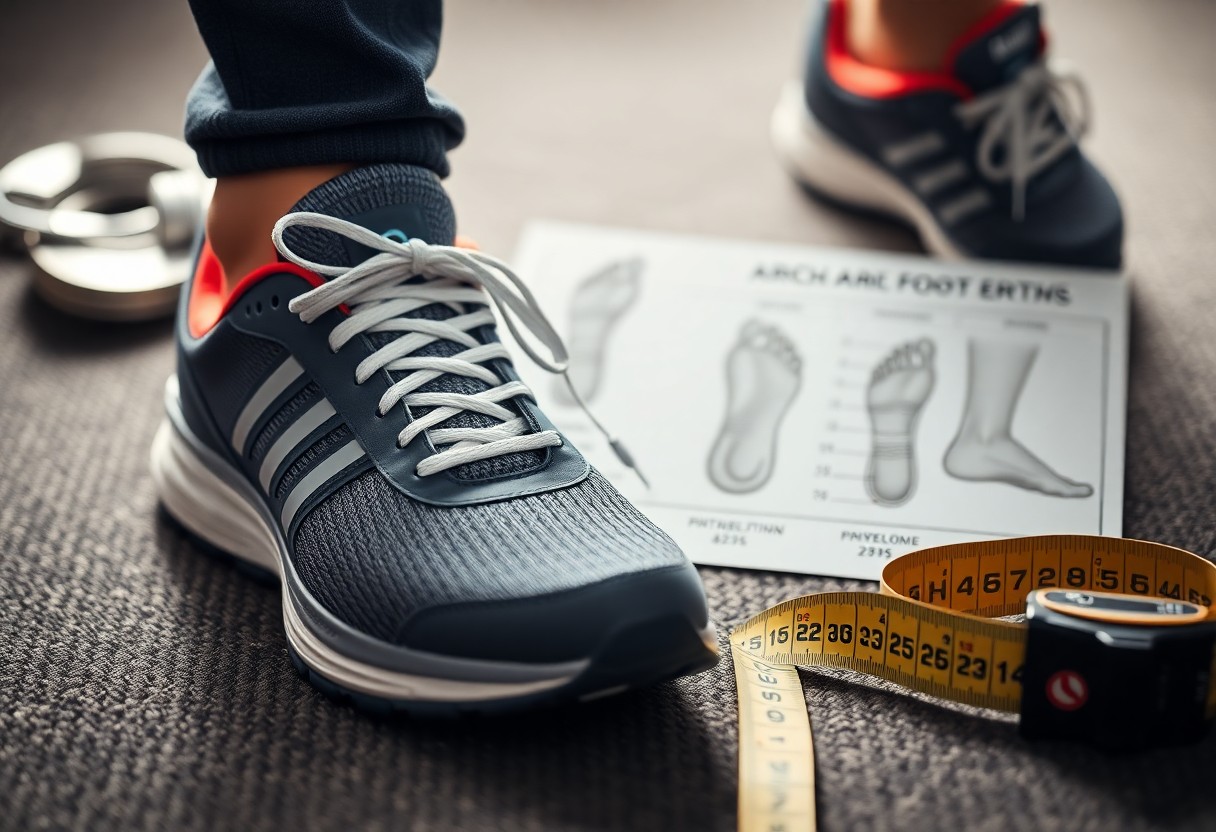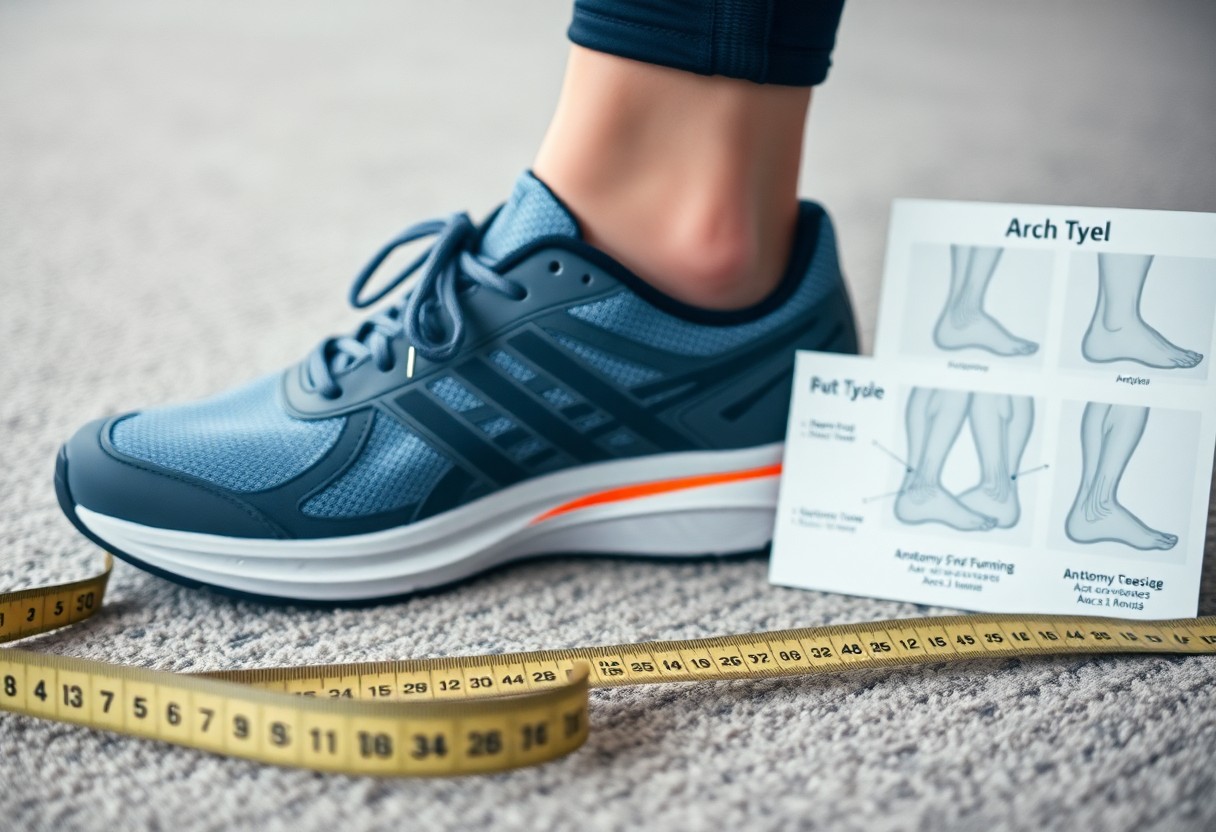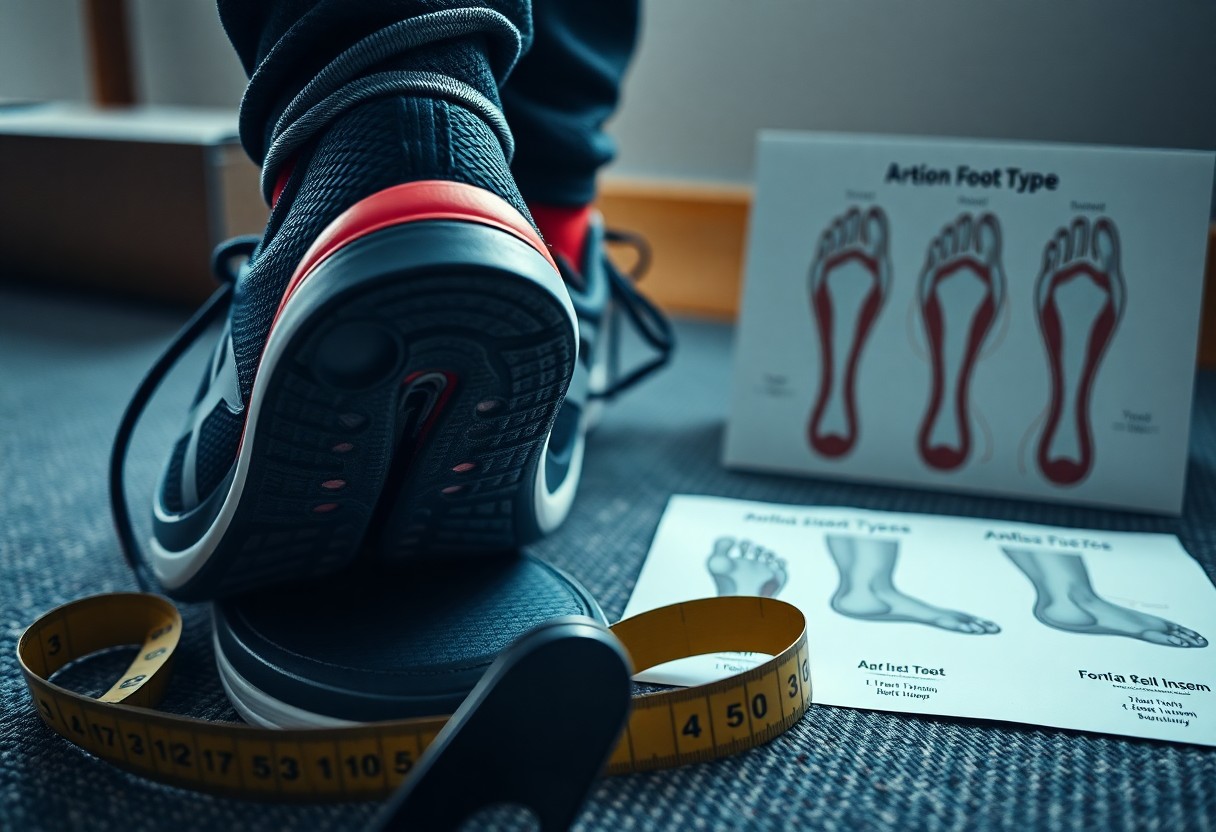Supporting your feet effectively doesn’t always mean adding arch support to your shoes. Surprisingly, most people do not need arch support in their footwear. Scientific research indicates that forgoing arch support can strengthen the muscles in your feet. Over-relying on artificial support can lead to muscle weakness over time. The human foot is naturally designed with arches that flex and adapt to different surfaces, and restricting this natural motion with rigid supports may negatively impact your foot health in the long run. This detailed article will explore the science behind arch support, empowering you to make informed choices about your foot health.

Tracing the Evolution of Arch Support in Footwear Design
The natural support system provided by your feet has played a crucial role in the design of footwear throughout history. The concept of arch support gained prominence in the 1920s when Dr. William Scholl introduced commercial orthotics. Before this innovation, individuals relied on the natural strength and flexibility of their feet. Understanding this historical context sheds light on the evolution of our knowledge regarding foot health and highlights the necessity of rethinking modern footwear design practices.
Exploring the Shift from Traditional Footwear to Modern Designs
Footwear evolution shows that ancient civilizations commonly wore simple, flat sandals or often went barefoot. Such practices promoted natural foot development and strength. The feet of our ancestors remained strong and flexible, unaffected by artificial supports, as evidenced by research on indigenous communities that continue to use traditional footwear styles. This historical viewpoint emphasizes the critical role of natural foot mechanics in preserving foot health and points out how contemporary trends frequently neglect these essential principles.
Evaluating the Effects of Modern Shoe Designs on Foot Health
By the mid-20th century, specifically in the 1950s, shoe manufacturers began to standardize built-in arch support in their designs. Today, most modern footwear features structured arch support, a characteristic that has become a norm in the industry despite limited scientific evidence supporting its necessity for everyone. This trend reflects changing consumer expectations and industry practices, raising important considerations regarding the implications of these designs on foot health. With around 70% of modern shoes containing arch support, it is essential to analyze whether this dependency is beneficial or harmful.
Research published in the Journal of Foot and Ankle Research highlights that excessive reliance on arch support may result in muscle weakness in your feet. As a result, many podiatrists now recommend occasional barefoot walking and the use of minimally supportive shoes to maintain natural foot strength and enhance overall foot health.

Delving Into the Intricate Anatomy of the Human Foot
Your feet are composed of 26 bones, 33 joints, and over 100 muscles, and they function most effectively when allowed to move freely. The arch of the foot is a self-supporting structure that gains strength through regular use, while artificial support may lead to its deterioration. Research indicates that 75% of individuals who wear traditional shoes with arch support experience reduced activity in their foot muscles, which can weaken natural foot strength over time, underscoring the importance of allowing your feet to engage in their natural movements.
Understanding the Advantages of Natural Foot Mechanics
The design of your foot is a remarkable feat of engineering, featuring a complex self-support system. Walking barefoot or in minimal shoes allows your feet to achieve a complete range of motion, enabling your arches to flex and strengthen naturally. Studies suggest that people who frequently walk barefoot or choose minimal shoes develop stronger foot muscles and more stable arches than those who depend on supportive footwear. This highlights the critical role of natural movement in maintaining foot health, as it encourages the body to uphold its structural integrity.
Effective Techniques for Boosting Foot Muscle Functionality
Disrupting your foot’s natural movement can impede its development. Your foot muscles need regular engagement through natural activities to preserve their strength. Research published in Nature indicates that wearing shoes without arch support fosters the growth of more robust intrinsic foot muscles. This connection demonstrates the importance of natural movement for optimal foot health, especially for individuals experiencing discomfort or weakness in their feet.
Moreover, recognizing the consequences of wearing shoes with built-in arch support is essential. When these shoes are used, foot muscles may become less active, leading to potential weakness over time. Studies have shown that transitioning to minimal footwear can result in an impressive increase in foot muscle strength by up to 60% within eight weeks. However, it’s crucial to approach this transition carefully, particularly for those with existing foot ailments, to prevent injury and facilitate a healthy adaptation process.
Investigating Scientific Research and Findings on Foot Health
If you’re keen to understand the science behind arch support, numerous studies indicate that your feet can strengthen without artificial support. Various investigations reveal that natural foot movement promotes superior muscle development and enhances arch stability, underscoring the essential role of biomechanics in foot health and the potential risks associated with over-reliance on artificial supports.
Spotlighting Key Scientific Research on Arch Support
Among the most significant findings, a study published in Nature shows that individuals who wear minimal footwear develop foot muscles that are 50% stronger than those who wear traditional supportive shoes. This evidence supports the idea that regular movement and exercise enable your feet to maintain their arches naturally, reinforcing the advantages of selecting the appropriate footwear.
Comparative Examination of Footwear Choices Among Different Populations
Contrasting Users of Traditional and Minimal Footwear
| Traditional Shoe Users | Minimal Shoe Users |
| Exhibit higher rates of flat feet | Demonstrate superior arch strength |
| Show weaker foot muscles | Exhibit stronger foot muscles |
A comprehensive examination of various populations indicates notable differences in foot health. Your foot structure can significantly adapt based on the types of shoes you choose to wear, emphasizing the importance of actively assessing your footwear selections.
Insights from Global Population Studies
| Developed Countries | Barefoot Communities |
| 20% flat foot occurrence | 3% flat foot occurrence |
| Higher reliance on arch support | Natural arch strength |

Understanding the Support Paradox in Footwear Choices
Challenging the widely accepted notions, over-reliance on arch support in footwear can weaken your feet’s natural strength. The human foot is intricately designed with a complex network of muscles, tendons, and ligaments that collectively provide natural support. When artificial arch support assumes this role, your foot muscles may become less engaged, leading to gradual weakening and a diminished ability to perform daily activities effectively.
Recognizing the Dependency Cycle Associated with Arch Support
The continuous use of arch support can create a harmful cycle. Feet may become dependent on external support, resulting in muscle atrophy. Research indicates that 70% of those who frequently use arch support report increased discomfort when walking without their supportive shoes, highlighting the development of this dependency that can negatively impact overall mobility and comfort.
Linking Muscle Weakness with Overuse of Arch Support
Wearing shoes with built-in arch support could weaken your intrinsic foot muscles by as much as 50%, according to findings in Nature. This weakening undermines your feet’s natural arch support system, potentially resulting in conditions such as flat feet and other foot-related issues. It’s important to note that this muscle weakness can extend beyond your feet, as weakened foot muscles can negatively affect your overall posture and balance. Research indicates that individuals who switch to minimal footwear often experience a 60% increase in foot muscle strength within six months, showcasing the benefits of avoiding unnecessary supports.
Exploring Natural Alternatives for Enhanced Foot Strength
For those aiming to move away from conventional arch support, various natural solutions are available to boost foot strength. These methods focus on allowing your feet to operate as they were intended, fostering the development of stronger foot muscles and more stable arches through natural movement and practices that promote foot health.
Adopting Minimalist Footwear for Optimal Natural Function
Minimalist shoes, defined by zero drop soles, wide toe boxes, and flexible materials, encourage natural foot movement. These designs facilitate unobstructed foot motion, helping maintain proper foot mechanics and supporting natural arch strength. Research indicates that consistent use of minimal footwear can boost foot muscle strength by up to 60% through everyday activities, reinforcing the significance of selecting appropriate footwear for your lifestyle.
Practical Strategies for Transitioning to Minimal Footwear Safely
When contemplating a shift to minimalist footwear, it’s vital to adopt a cautious and gradual approach for your safety and comfort. Begin by wearing minimal shoes for short durations, progressively increasing the time over several weeks. This method helps prevent overuse injuries as your feet adapt to their newfound freedom, ensuring a smoother transition that supports long-term foot health.
A successful transition should ideally involve specific foot strengthening exercises. Start with 10-15 minutes per day in minimal shoes, gradually adding 5-10 minutes each week. Incorporate exercises like toe spreads and short barefoot walks on safe surfaces. This incremental approach allows you to reduce the risk of common transition injuries while effectively building your natural arch strength, ultimately enhancing your overall foot health.
Addressing Individual Medical Considerations for Optimal Foot Well-Being
Recognizing that your foot health requires tailored attention is essential. While natural foot movement is advantageous for muscle strength, certain medical conditions might necessitate specific support. Factors such as your foot structure, activity level, and any pre-existing conditions will affect your ideal footwear needs, emphasizing the importance of personalized assessments.
Identifying Specific Conditions Requiring Arch Support
Contrary to common beliefs, arch support is not universally needed. However, individuals with acute injuries, severe flat feet, or specific medical conditions may temporarily or permanently benefit from arch support. Research indicates that only 10-20% of the population genuinely requires specialized arch support for medical reasons, underscoring the importance of personalized evaluations for optimal foot health.
Guidelines for Comprehensive Professional Foot Health Assessments
To make well-informed decisions about your footwear, consulting a foot health professional is advisable. Comprehensive assessments should include gait analysis, foot structure evaluation, and medical history review. These components are critical for determining whether you require arch support or if transitioning to minimal footwear is a feasible option for your unique needs.
Support from a qualified professional can provide insight and guidance for your foot health journey. A thorough assessment should encompass measuring arch flexibility, evaluating muscle strength, and analyzing walking patterns. Your healthcare provider should also consider your daily activities and any previous foot injuries to formulate an effective treatment strategy tailored to your needs and lifestyle.
Assessing Footwear Selections and Their Influence on Foot Health
Your choice of footwear has a profound impact on your foot health. It is clear that arch support is unnecessary for most individuals and may indeed weaken foot muscles over time. Your feet possess inherent strength and flexibility, functioning optimally when allowed to operate as nature intended. If you’re contemplating a transition to minimal footwear, starting this process gradually will help your feet adapt effectively. The evidence strongly indicates that permitting your feet to function without artificial support can result in stronger muscles and improved foot health for the majority. Always consider your personal needs and consult a foot health professional for specific concerns regarding your foot health.
Common Questions About Arch Support and Foot Health
Do healthy feet genuinely need arch support in shoes?
Most healthy feet do not require arch support in shoes. Research shows that natural foot strength develops more efficiently without artificial support. The foot’s muscles and arches perform best when allowed to function naturally. This aligns with studies on populations that frequently go barefoot or prefer minimal shoes, which exhibit stronger foot muscles and fewer arch-related problems.
Can prolonged arch support usage weaken feet over time?
Yes, extended reliance on arch support can lead to weakened foot muscles. When artificial support takes over the role of foot muscles, these muscles become less active and gradually lose strength. This can create a dependency cycle. Research published in Nature indicates that individuals who consistently wear conventional shoes with arch support often report weaker foot muscles compared to those who choose minimal footwear.
Who genuinely needs arch support in their footwear?
Some individuals with specific foot conditions, injuries, or medical issues may genuinely benefit from arch support. This includes those diagnosed with flat feet, certain foot injuries, or structural abnormalities. However, these cases should be evaluated by a foot health professional who can create an appropriate treatment plan. The goal should be to restore natural foot function whenever possible, rather than relying on permanent support.
The Article Arch Support: Essential Facts About Shoe Necessities Was Found On https://limitsofstrategy.com
The Article Arch Support: Key Insights on Essential Shoe Needs First Appeared ON
: https://ad4sc.com
Comments are closed